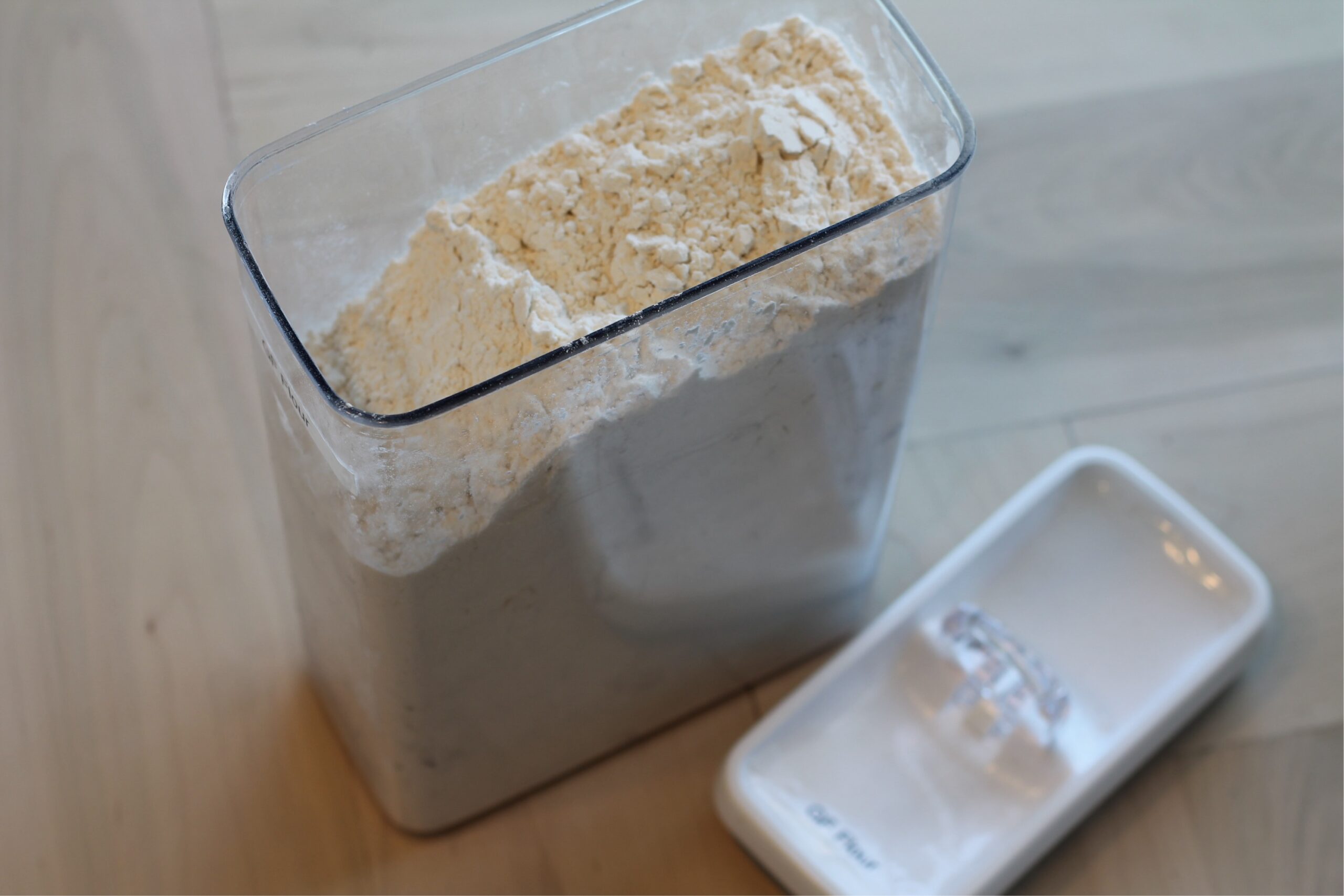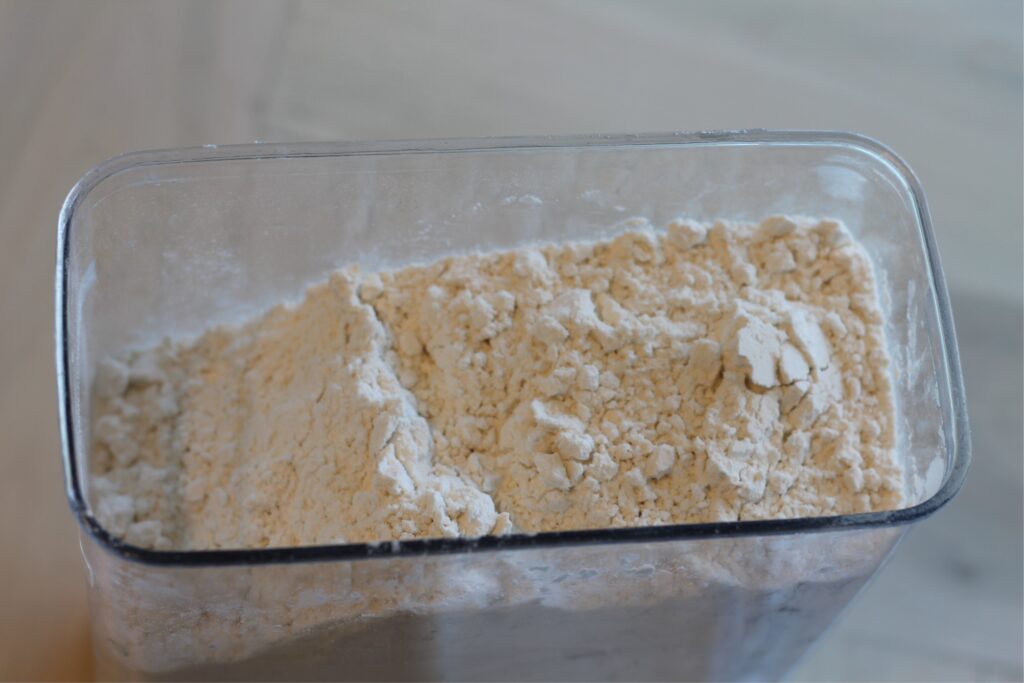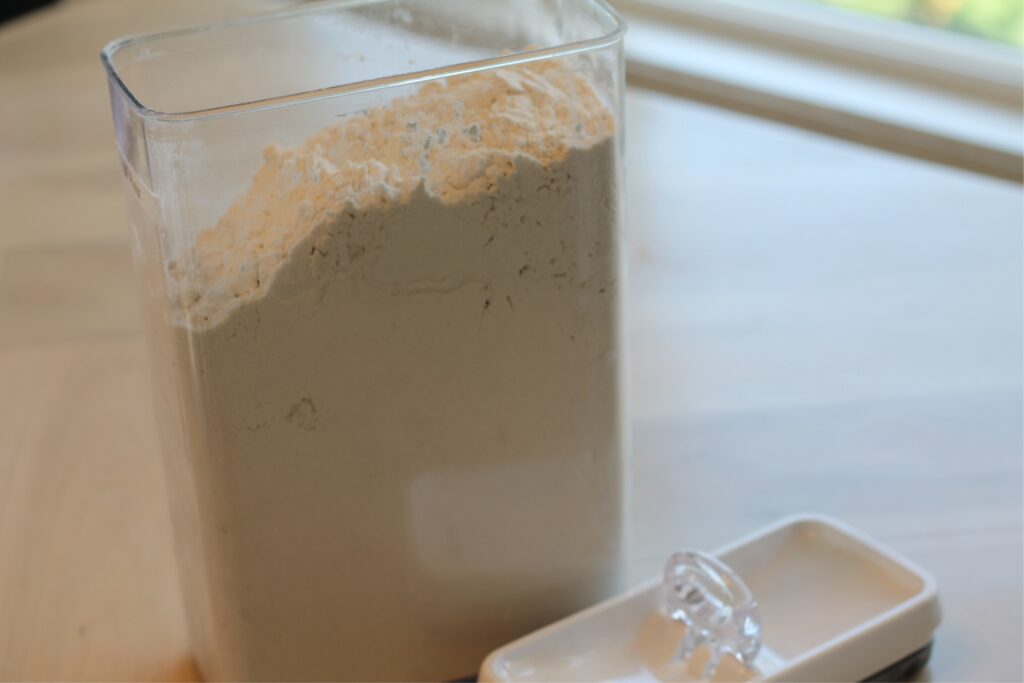
Gluten Free All-Purpose Flour Mix
Today I am going to talk about how to make your own gluten free all-purpose flour mix for everything EXCEPT breads made with yeast. Regular all-purpose gluten free flour blends don’t work super well when making yeast bread loaves, so that’s why I have created a gluten free bread flour mix recipe here. But, if you’re looking for an all-purpose gluten free flour blend for all other baked foods, then you’re in the right spot!
This post may contain affiliate links. See full disclosure HERE.
Why I started making my own gluten free flour mixes
When I first started baking gluten-free, I was constantly frustrated. The brand I could consistently find wasn’t working for a lot of my recipes, making things too gummy. And Every brand of gluten free all purpose flour mix acted differently. Some made cookies spread too far. Others left pancakes dense and gummy. I’d follow a recipe exactly, only to end up with something disappointing. It didn’t take long to realize that the problem wasn’t my technique—it was the flour.
Most store-bought gluten-free blends aim to be one-size-fits-all. But gluten-free baking isn’t that simple. You need a mix that behaves predictably and works well in the recipes you make. I wanted consistency. I wanted to know that when I measured a cup of flour, I wouldn’t be gambling with the results.
So, I started making my own. At first, it felt very intimidating. I didn’t know which flours did what. But once I began learning how different starches and proteins affect texture and structure, it got easier.
Making my own gluten-free flour also saved money. The specialty blends at the store can get expensive, especially if you’re baking often. Buying the ingredients in bulk and mixing them myself turned out to be way more affordable in the long run. I could make 10 cups at a time, store it in a big airtight container, and always have it on hand.

Why Gluten-Free Flours Need to Be Finely Milled
If you’ve ever baked gluten-free, you know it’s not as simple as swapping one flour for another. Gluten-free flours behave differently. They’re missing the structure that gluten provides. That’s where milling comes in. When you start with finely milled flour, you’re setting yourself up for a smoother dough, a lighter crumb, and a better final product. It really makes all the difference.
The finer the grind, the better the starches can absorb moisture. That means your batter or dough hydrates more evenly. No gritty texture, no clumps, and fewer issues with dry or crumbly bakes. If you’ve had a cookie fall apart before it made it to your mouth, odds are the flour was too coarse.
Plus, finely milled flours blend more easily with other ingredients. Since gluten-free baking relies on combining multiple flours and starches, this matters a lot. You need everything to behave as one unified flour blend. That’s hard to do when one flour feels like sand and another feels like powder.
Another perk? Finer flour makes your batter more stable. It helps reduce spreading in cookies, collapsing in cakes, or rubbery middles in quick breads. I’ve had my share of baking fails, and they almost always tracked back to coarsely milled flour. So, if you want gluten-free flour to work like a true substitute, go fine. It’s worth the extra cost, and once you taste the difference, there’s no going back.
Why I Include Pectin in My Gluten-Free Flour Blend
Pectin might sound like something you’d only use in jam, but it’s actually a secret weapon in gluten-free baking. I include pure powdered pectin in my flour blend because it helps with structure, moisture, and shelf life—all things that gluten-free baked goods often struggle with.
Without gluten, baked goods can fall apart or feel dry and crumbly. That’s where pectin steps in. It acts as a gentle binder, working alongside xanthan gum to help hold everything together. It adds a slight stretch and gives your dough a little more flexibility, especially in softer recipes like muffins, cakes, or sandwich bread.
Pectin also helps retain moisture. This is a big deal in gluten-free baking because things tend to dry out faster. Even just a small amount of pectin in the mix can keep baked goods softer for longer and help prevent that dry, crumbly texture a day or two later.
It also makes the texture a little more pleasant—less gritty, more cohesive. And unlike some gums or starches, it doesn’t make things gummy or heavy. It’s especially helpful in blends that include a higher percentage of rice flour or protein powder, where the risk of dryness is higher.
So while it might seem like a tiny ingredient, pectin pulls more weight than you’d expect. It’s one of those subtle additions that makes a noticeable difference in how your gluten-free baked goods feel, taste, and hold up after baking.

Why All-Purpose Gluten-Free Flour Doesn’t Need Modified Tapioca or Vegan Milk Powder (But GF Bread Flour Does)
Not every gluten-free flour blend needs to have all the bells and whistles. If you’re baking cookies, muffins, pancakes, or waffles—classic “all-purpose” baked goods—you don’t need your flour to stretch, rise high, or hold complex structure. That’s why basic all-purpose gluten-free mixes usually leave out things like modified tapioca starch or vegan milk powder. They’re just not necessary for softer, lower-structure bakes.
Modified tapioca starch is designed to give dough more stretch and flexibility. It helps trap gas from yeast and gives structure to doughs that need to rise. It’s ideal for chewy bread crusts, soft centers, and yeasty pizza dough that can stretch without tearing. But in cookies or muffins, where you actually want a more tender, spreadable result, it would be overkill. It can even make softer bakes too firm or rubbery if there’s too much.
Vegan milk powder works a little differently. It adds fat, sugars, and proteins that mimic the richness of dairy. In bread recipes—especially gluten-free ones—this helps create a more golden crust, softer crumb, and longer shelf life. But in all-purpose baking, those ingredients are usually added directly through eggs, butter, or milk in the recipe. You don’t need to pre-load them into the flour mix.
So if you’re just looking to bake brownies, quick breads, or cupcakes, a simpler gluten-free flour blend works perfectly. But if you’re making sandwich bread, pizza crust, or cinnamon rolls, that’s when you want a flour blend with more structure, more stretch, and a little extra fat and protein—which is exactly what modified tapioca and milk powder bring to the table.
Print
Homemade Gluten Free All-Purpose Flour Mix
- Total Time: 5 minutes
- Yield: 10 cups (140g per cup) 1x
Ingredients
- 3 cups superfine brown rice flour
- 3 cups superfine white rice flour
- 1½ cups tapioca starch
- 1½ cups potato starch
- ½ cup potato flour
- ⅓ cup xanthan gum (or use a slightly scant ⅓ cup)
- 3 tablespoons + 1 teaspoon pure powdered pectin
Instructions
- In a large bowl, combine all the ingredients, using a digital scale.
- Whisk thoroughly to evenly distribute the starches, gums, and pectin throughout the flour.
- Store in an airtight container in a cool, dry place for up to 3 months, or refrigerate for longer shelf life.
- Stir or shake well before each use. For reference 140g of this mix is equal to a 1 cup serving.
- Prep Time: 5
